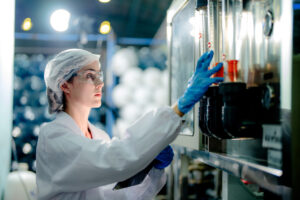Brooks Instrument Resource

In this video, Brooks Instrument presents the operation of thermal mass flow controllers.
Mass Flow Controllers are also referred to as MFCs. The basic construction of mass flow controllers consists of four main components. A body, a thermal sensor, a printed circuit board and a magnetic control valve. As gas enters the flow body, a laminar flow element or restrictor diverts precise portion of the gas to pass through the thermal sensor. The thermal sensor is the heart of the mass flow controller, and consists of a bypass tube fitted with a heater element and two temperature sensors.
As gas enters the sensor bypass tube, the upstream and downstream temperature sensors measure the temperature differential between gas entering the bypass tube and exiting the bypass tube.
When choosing an MFC supplier, consider whether the manufacturer provides a zero stability specifications, also known a sensor stability. This indicates the devices ability to maintain accuracy over time. Good sensor stability ensures the MFC delivers highly accurate and consistent results with less frequent recalibration or replacements needed. A stable, accurate sensor guarantees stable, accurate process control.
As the thermal sensor measures the change in flow temperature, it sends a signal to the circuit board, which interprets the data into flow output and compares it to the set point received from the user set point signal. If the set point, or required value, is higher than the measured value or flow output, the controller will open the control valve, letting more flow through. If the set point is lower than the flow output, the control valve will close, decreasing flow. This happens when a coil inside the magnetic control valve sends an electrical current around a valve stem, which moves the valve plunger by thousands of an inch.
The circuit board is the brain of the device, so pay close attention to the electronics and firmware architecture when evaluating an MFC. The device should have the ability to support advanced alarms and diagnostics to monitor and correct issues before the overall process is negatively affected. Check to see what built in alarms and diagnostics are available.
Brooks Instrument devices support not only flow output, but additional alerts like flow totalization, valve drive, plugged flow and calibration. All of Brooks devices are tested as complete systems to ensure robust and accurate operation and are calibrated to international standards.
Our instrumentation group has been working with customers in a range of applications and Brooks Instrument for years and can help your team determine which products and solutions are best for your operation.
Are you interested in learning more? Fill out our contact form with some details of your application and we’ll have a specialist get in touch! Also, learn more about the Brooks Instrument products and solutions offered by Cross.



